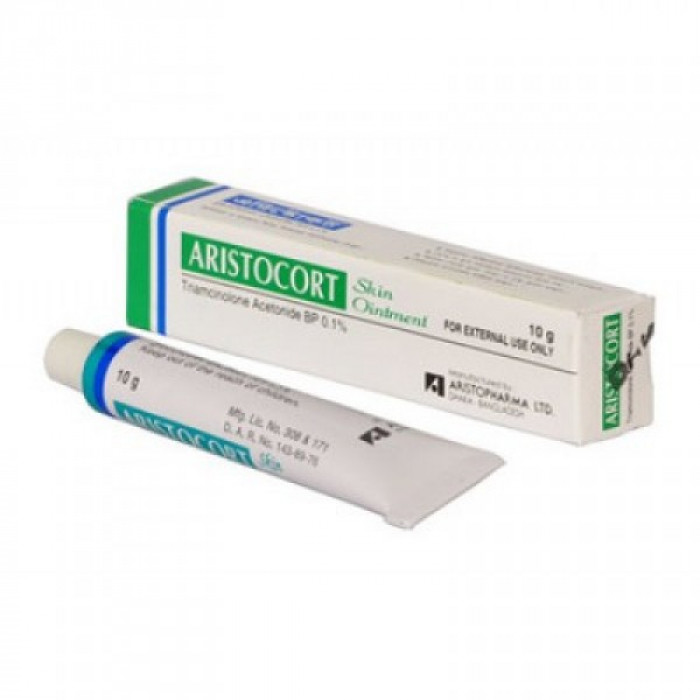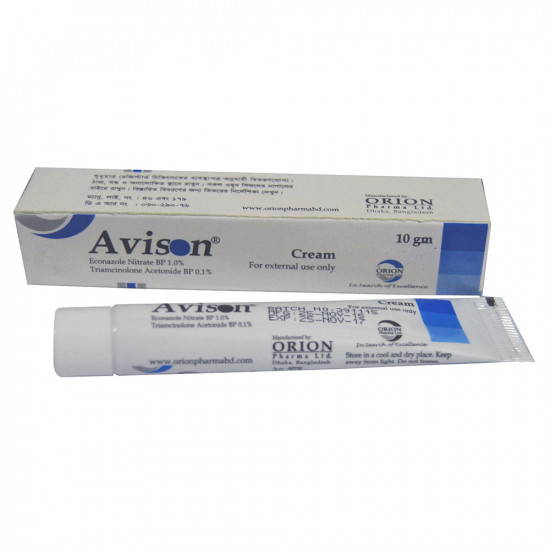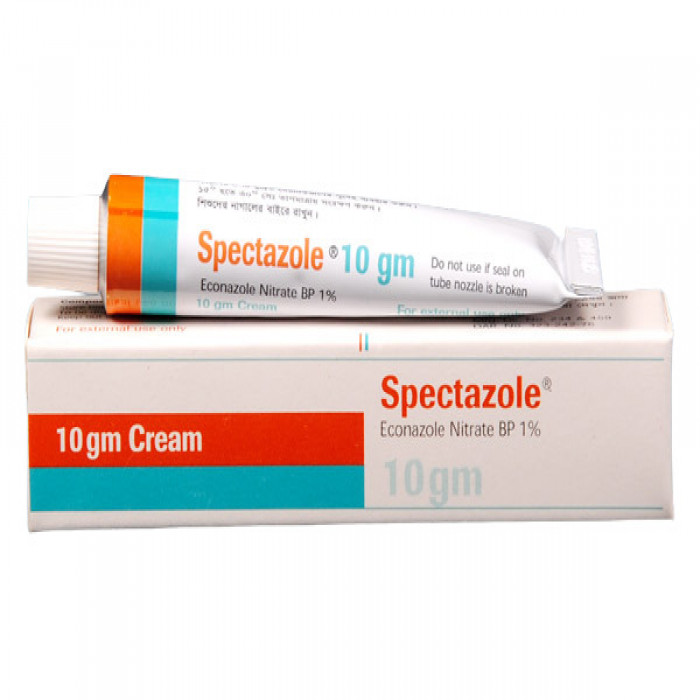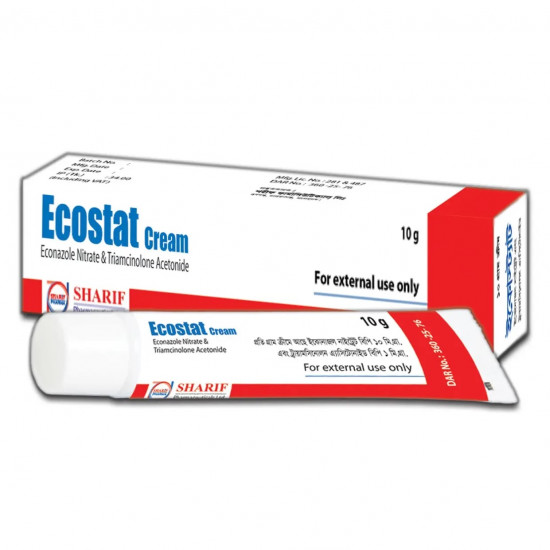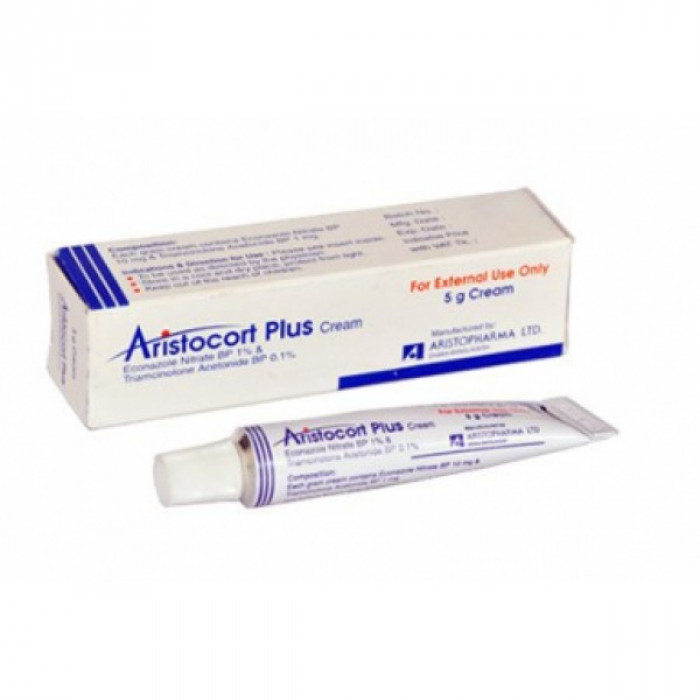
✔ 100% Authentic Product
👁️ Currently Viewing 1475
Aristocort Plus Cream 5gm
Aristocort Plus Cream is a gentle, pale cream that includes Econazole Nitrate BP 1% and Triamcinolone Acetonide BP 0.1%. Econazole Nitrate is a versatile antifungal substance that effectively combats a range of skin fungal infections caused by dermatophytes, yeasts, and molds. Additionally, it exhibits efficacy against certain types of gram-positive bacteria. Triamcinolone Acetonide, a strong corticosteroid, possesses anti-inflammatory, anti-itch, and anti-allergic properties.
Discount
Price: ৳ 38
MRP:
৳
40
5%
Off

100% Genuine Products, Guaranteed

Safe & Secure Payments, Always

Fast, Secure & Efficient Delivery

Proper Packaging
 Cash on Delivery - All over Bangladesh
Cash on Delivery - All over Bangladesh Regular Delivery - 12-24 Hours, Dhaka City* Charge Tk.39-59
Regular Delivery - 12-24 Hours, Dhaka City* Charge Tk.39-59 Regular Delivery - 24-48 Hours, Other Cities* Charge Tk.99-110
Regular Delivery - 24-48 Hours, Other Cities* Charge Tk.99-110
 ফ্রি ডেলিভারিঃ - ৯৯৯ টাকা+ অর্ডারে, ঢাকা
শহরে
ফ্রি ডেলিভারিঃ - ৯৯৯ টাকা+ অর্ডারে, ঢাকা
শহরে ফ্রি ডেলিভারিঃ - ২৯৯৯ টাকা+ অর্ডারে, ঢাকার
বাহিরে
ফ্রি ডেলিভারিঃ - ২৯৯৯ টাকা+ অর্ডারে, ঢাকার
বাহিরে
100% Genuine Products, Guaranteed
Safe & Secure Payments, Always
Fast, Secure & Efficient Delivery
Proper Packaging
 Cash on Delivery - All over Bangladesh
Cash on Delivery - All over Bangladesh Regular Delivery - 12-24 Hours, Dhaka City* Charge Tk.39-59
Regular Delivery - 12-24 Hours, Dhaka City* Charge Tk.39-59 Regular Delivery - 24-48 Hours, Other Cities* Charge Tk.99-110
Regular Delivery - 24-48 Hours, Other Cities* Charge Tk.99-110 ফ্রি ডেলিভারিঃ - ৯৯৯ টাকা+ অর্ডারে, ঢাকা
শহরে
ফ্রি ডেলিভারিঃ - ৯৯৯ টাকা+ অর্ডারে, ঢাকা
শহরে ফ্রি ডেলিভারিঃ - ২৯৯৯ টাকা+ অর্ডারে, ঢাকার
বাহিরে
ফ্রি ডেলিভারিঃ - ২৯৯৯ টাকা+ অর্ডারে, ঢাকার
বাহিরে
✅ Description:
Aristocort Plus Cream cream is indicated in dermatomycosis caused by dermatophytes yeast and fungus with clear inflammatory and allergic symptoms such as various eczematous mycosis, diaper dermatitis, eczema marginatum, intertrigo, folliculitis, trichophytic and sycosis barbae. Aristocort Plus Cream is also indicated for the treatment of mycosis present in various folds of the body.
Safety Advices
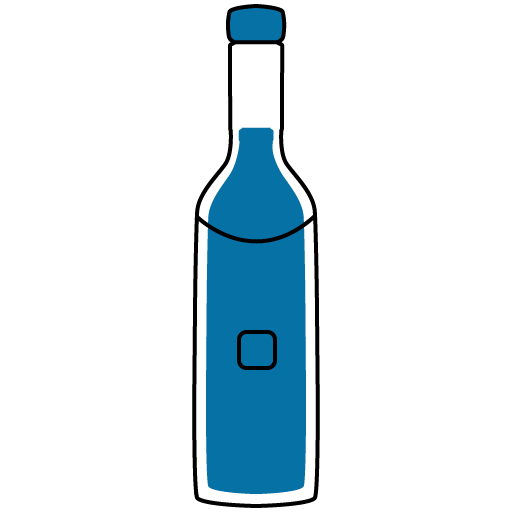
Alcohol
No interaction found/established

Pregnancy
CONSULT YOUR DOCTOR
No interaction found Aristocort Plus Cream unsafe to use during pregnancy as there is definite evidence of risk to the developing baby. However, the doctor may rarely prescribe it in some life-threatening situations if the benefits are more than the potential risks. Please consult your doctor.d/established
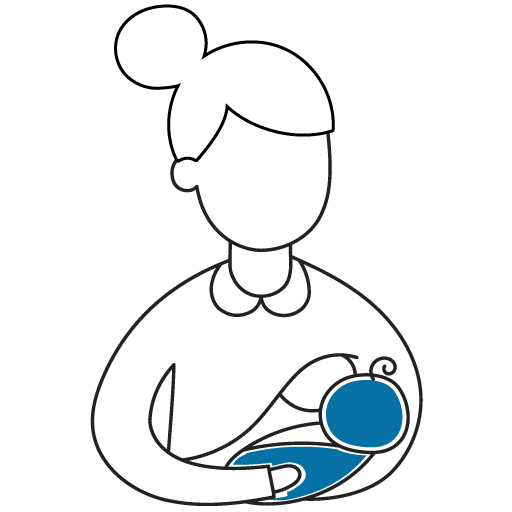
Breastfeeding
CONSULT YOUR DOCTOR
Aristocort Plus Cream is probably safe to use during breastfeeding. Limited human data suggests that the drug does not represent any significant risk to the baby.

Driving
CONSULT YOUR DOCTOR
No interaction found/established
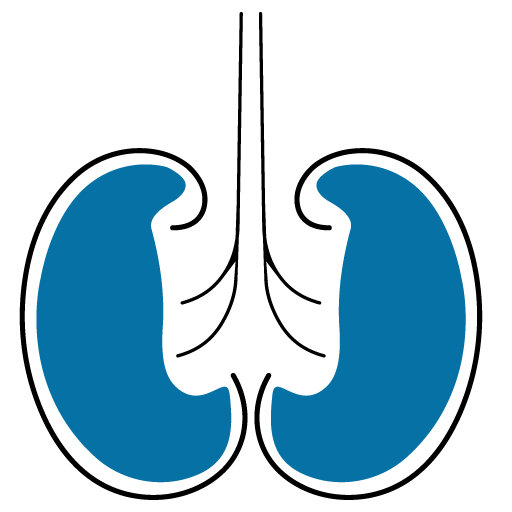
Kidney
No interaction found/established

Liver
No interaction found/established
✔️ Uses of Aristocort Plus Cream
- Treatment of Skin infections
✔️ How does Aristocort Plus Cream work?
Aristocort Plus Cream helps treat and control skin infections caused by bacteria and fungus. It also gives relief from pain, redness, and itching in the affected area and speeds up the healing process. You may notice your skin starting to get better within 4-5 days. Keep using Aristocort Plus Cream for as long as it is prescribed.
✔️ Side Effects of Aristocort Plus Cream
In rare cases, there may be temporary local mild irritation, itching, and redness immediately after applying the cream. However, Econazole has minimal allergenic effects and is generally well tolerated, even by sensitive skin.
It is important to be aware that long-term continuous use of topical corticosteroids, such as Triamcinolone Acetonide, can potentially lead to adrenal suppression. This is particularly a concern in infants or children, as well as when occlusive dressings are used. It should be noted that even an infant's napkin or diaper can act as an occlusive dressing, increasing the risk of systemic absorption of the medication.
If any concerns or adverse effects arise during the use of the cream, it is recommended to consult a healthcare professional for further guidance.
✔️ Quick Suggestions:
- Aristocort Plus Cream helps treat skin infections.
- It is for use on the skin only. Do not use it in your eyes, mouth, or vagina. Rinse with cold water if you accidentally get it in these areas.
- Don't cover the area being treated with airtight dressings such as bandages unless directed by a doctor, as this may increase the risk of side effects.
- If you think the area of skin you are treating has become more irritated, you should stop using Aristocort Plus Cream and consult your doctor.
- Don't use this medicine more often or for longer than advised by your doctor. Inform your doctor if the treated skin area does not improve after 1 week of treatment.
✔️ Indication
It's used to treat atopic dermatitis, contact dermatitis, eczematous dermatitis, neurodermatitis, seborrheic dermatitis, insect bites, lichen simplex chronicus, exfoliative dermatitis, stasis dermatitis, nummular eczema, psoriasis, and pruritus ani and vulvae.
✔️ Pharmacology
Econazole works by altering the permeability of the cell wall membrane in fungi, which can hinder their ability to grow and reproduce. It may also disrupt RNA and protein synthesis, as well as interfere with lipid metabolism in these organisms.
Triamcinolone primarily exhibits glucocorticoid activity. It functions by suppressing the migration of polymorphonuclear leukocytes, a type of white blood cell involved in the immune response. By doing so, it helps reduce inflammation. Additionally, Triamcinolone reduces capillary permeability, which further contributes to its anti-inflammatory effects.
✔️ Dosage & Administration of
To treat the affected area, a small amount of Triamcinolone should be gently rubbed onto it 1-2 times daily. In some cases of eczematoid psoriasis, applying Triamcinolone under an occlusive dressing can yield more effective results.
Here's how the occlusive dressing technique is performed: Start by gently rubbing a small amount of Triamcinolone onto the lesion until it disappears. Then, reapply the cream, creating a thin coating, and cover it with a flexible, non-porous film. For convenience, Triamcinolone can be applied intermittently, with a 12-hour occlusion during the night, followed by reapplication without occlusion during the day.
It's important to note that Triamcinolone should not be used in children under 8 years old. When administering topical corticosteroids to children, it's crucial to use the minimum amount necessary for effective treatment. Prolonged corticosteroid therapy in children can potentially interfere with their growth and development. Children are more prone to experiencing side effects, so treatment with Triamcinolone should generally not exceed 5 days unless specifically instructed by a healthcare professional.
✔️ Interaction
Econazole is actually a broad-spectrum antifungal agent and not an oral anticoagulant. It is used topically to treat fungal infections on the skin.
Triamcinolone does not reduce the amount of salicylates in the blood. It is a corticosteroid and does not have a direct effect on salicylates. However, the concomitant use of nonsteroidal anti-inflammatory drugs (NSAIDs) with corticosteroids can increase the risk of gastrointestinal bleeding and ulceration.
Triamcinolone can antagonize the blood glucose-lowering effects of antidiabetic medications. It may cause an increase in blood glucose levels and require adjustments in diabetic treatment.
Amphotericin B, beta-blockers, potassium-depleting diuretics, and theophylline do not increase the risk of hyperkalemia when used with triamcinolone.
Triamcinolone Acetonide should not be applied to healthy skin or large areas of the skin. It should also not be used in the eyes as it can increase the risk of glaucoma and cataracts.
✔️ Contraindications
Individuals who have shown allergic reactions to any of the components in this cream should avoid using it. Furthermore, this cream, similar to other dermatological preparations containing corticosteroids, should not be used in certain skin disorders such as tuberculosis, varicella (chickenpox), herpes simplex, or other viral skin infections. It should also not be applied to fresh vaccination sites.
Decubitus ulcers, also known as pressure ulcers or bedsores, are not caused by viruses, bacteria, or fungi. They result from prolonged pressure on the skin and underlying tissues, leading to tissue damage and ulceration. The mentioned skin infections (tuberculosis of the skin, syphilis of the skin, herpes simplex, herpes zoster, and chickenpox) are unrelated to decubitus ulcers.
Rosacea and rosacea-like dermatitis are two distinct types of skin conditions that fall under the umbrella term of rosacea. They are characterized by facial redness, flushing, and the presence of papules or pustules.
✔️ Pregnancy & Lactation
There is limited information on the teratogenic effects of topically applied corticosteroids in pregnant women, as appropriate and well-controlled studies are lacking. Therefore, the use of topical corticosteroids during pregnancy should only be considered if the potential benefits to the mother outweigh the potential risks to the fetus.
Regarding the transfer of topical corticosteroids into breast milk, it is unclear if significant systemic absorption occurs to produce measurable amounts in breast milk. Systemically administered corticosteroids are known to be excreted in breast milk in quantities unlikely to cause harm to the newborn. However, caution should still be exercised when using topical corticosteroids in breastfeeding mothers.
In both cases, it is advisable to consult with a healthcare professional who can weigh the potential risks and benefits and provide appropriate guidance based on individual circumstances.
✔️ Precautions & Warnings
Triamcinolone Acetonide should be discontinued if any unusual reactions or adverse effects occur. When using topical steroids, caution should be exercised, and close observation of the affected areas is necessary. It is important to be aware of the risk of infection spread from anti-inflammatory drugs and consider the possibility of discontinuing steroid therapy or initiating antibacterial treatments if needed.
Triamcinolone Acetonide should not be applied to healthy skin or over large areas of skin. It should also not be used in the eyes as it can potentially lead to glaucoma and cataracts. Prolonged use of topical steroids, especially for more than 4 weeks, may increase the likelihood of developing atrophic striae (stretch marks). Prolonged use in flexures and intertriginous areas (skin folds) is not recommended.
It is important to note that children have a higher rate of absorption of topical corticosteroids, which makes them more susceptible to systemic adverse effects. Long-term continuous use of topical corticosteroids in babies should be avoided. Even without occlusion, adrenal suppression can occur.
✔️ Storage Conditions
Store in a cool & dry place. Protect from light.
⚠️Disclaimer:
At ePharma, we’re committed to providing accurate and accessible health information. However, all content is intended for informational purposes only and should not replace medical advice from a qualified physician. Please consult your healthcare provider for personalized guidance. We aim to support, not substitute, the doctor-patient relationship.





